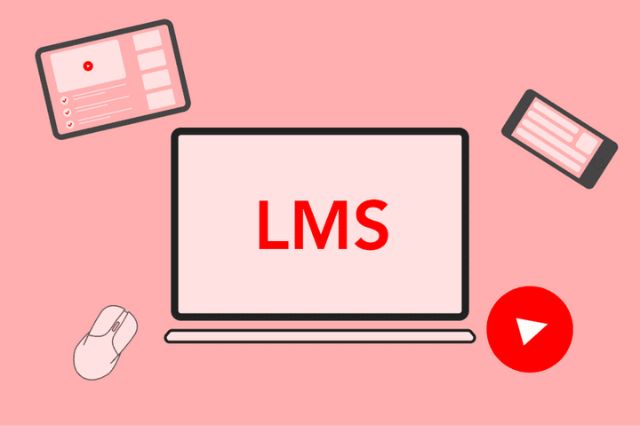E-learning has long been at the forefront of educational discussions, especially as custom LMS platforms have overtaken numerous advanced online courses and trainings. The attractiveness of distance education stems from its two significant advantages.
Firstly, it offers a cost-effective alternative to traditional classroom experiences. Secondly, it allows you to quickly familiarize yourself with new material, and provides a convenient way to assess comprehension through tests.
In this article we will reveal the main intricacies you should consider while developing your own LMS from scratch. We’ll explore the development details, LMS types and critical phases in creating a learning management system, among other essential topics.
What is LMS itself?
An LMS is a digital hub for training materials, easily accessible anywhere. It offers users a streamlined way to acquire skills, while for businesses, it’s a cost-effective method to train employees, monitor their progress, and even monetize online training.
LMS is like a pocket-sized school for both learners and educators. Just as in traditional schooling, where theory is taught, practiced, and tested, the LMS offers a modern approach to the same. Users can access materials anytime, even on the go, and after completion, they’re assessed for comprehension. On the other hand, course administrators can automate training, update content based on current trends, and get real-time insights into each student’s performance.
Exploring Learning Management System Types
In the realm of Learning Management Systems (LMS), there exist two primary categories: server-based and cloud-based. Let’s delve into the nuances that set them apart.
- Server-Based LMS
The server-based LMS is installed on the owner’s server and interacts with users via web browsers. This type of LMS was the pioneer in academic settings and continues to be favored by universities. It also finds favor with large corporations seeking total control over their systems and stringent information security.
However, it’s worth noting that server-based distance learning systems come with certain drawbacks, including the expenses associated with acquiring a server, software, and ongoing administration.
- Cloud-Based LMS
Cloud-based solutions represent the predominant platform for distance learning. Their popularity stems from their simplicity and user-friendliness, making them the preferred choice for owners of online schools and business leaders looking to improve corporate learning. In this approach, there’s no need to invest in and manage a server, as all content resides in the cloud, and you simply pay for its usage.
Within the LMS market, you can find both off-the-shelf software products and systems that can be customized with additional features tailored to your training objectives and specific needs. When opting for pre-made solutions, you’ll need to adapt to their capabilities, consider their limitations, and adhere to established standards. Consequently, an increasing number of companies and educational institutions are gravitating towards the adoption of open source systems.
Creating Your Own LMS in 7 Key Steps
Step 1: Planning and Evaluation
Begin by assessing the cost and timeline for your LMS project. On this step, you need a project manager to oversee the process and facilitate communication. A preliminary assessment provides an estimate, while a detailed plan, typically taking a few days to a week, offers a precise project roadmap. Involving a business analyst at this stage helps align expectations and accurately calculate costs.
Step 2: Analytics
Business analysis ensures everyone shares the same vision and helps refine project requirements. While some clients perform this independently, developer-led analysis aids in better understanding your needs and reevaluating the project scope and budget.
Step 3: Design
If you lack a design, the development team creates one from scratch. Designers map out screens, graphics, and prototypes, taking into account various usage scenarios. But, remember that feedback from analysts and clients is crucial to ensure the design aligns with your requirements.
Step 4: Development
With a detailed technical specification, approved design, and prototype in place, development begins. The team writes code to implement the application’s functionality, linking it to the backend if required. Design elements are incorporated into the code, and designers verify that the implementation aligns with the design.
Step 5: Testing and Bug Fixing
Quality assurance (QA) engineers work closely with developers and test the application throughout development. Test documentation, such as test cases, is prepared. Bugs are identified, logged, and fixed, ensuring they don’t affect other functionality. Thorough testing ensures quality and budget control.
Step 6: Release
Once testing and modifications are complete, and all stakeholders agree on the outcome, the project is ready for production release.
Step 7: Support and Development
After the LMS launch, support continues. Bugs discovered post-release should be addressed promptly. Based on feedback and evolving needs, you can opt for a maintenance contract or initiate new development phases to enhance your LMS further.
The decision between “inside” and “outside” learning platforms is a critical one. Before you decide, consider these questions: Will your company gain from enhancing your workforce’s skills using internal learning tools? Can customized LMS development cut costs for your organization?




Leave a Comment